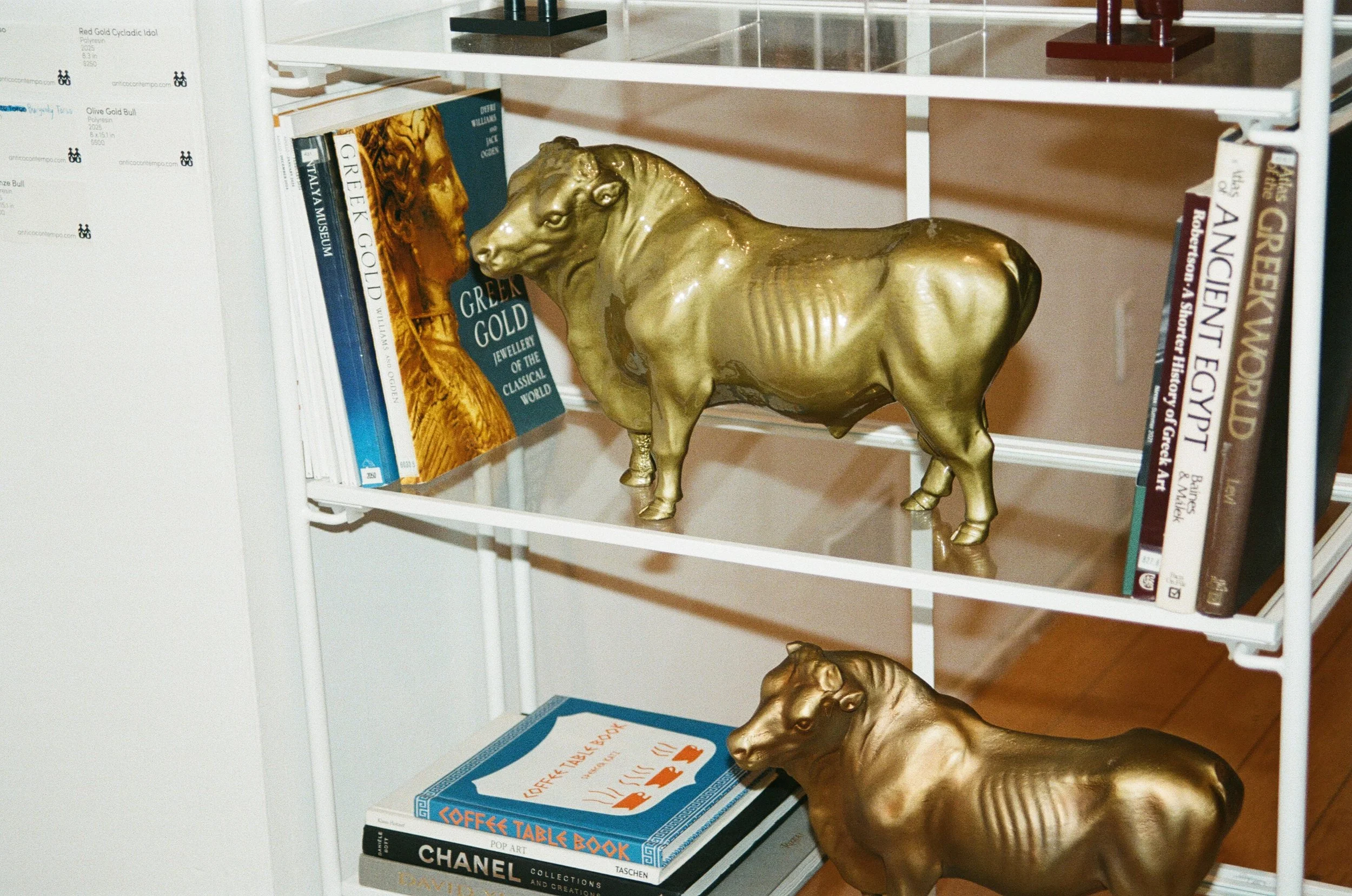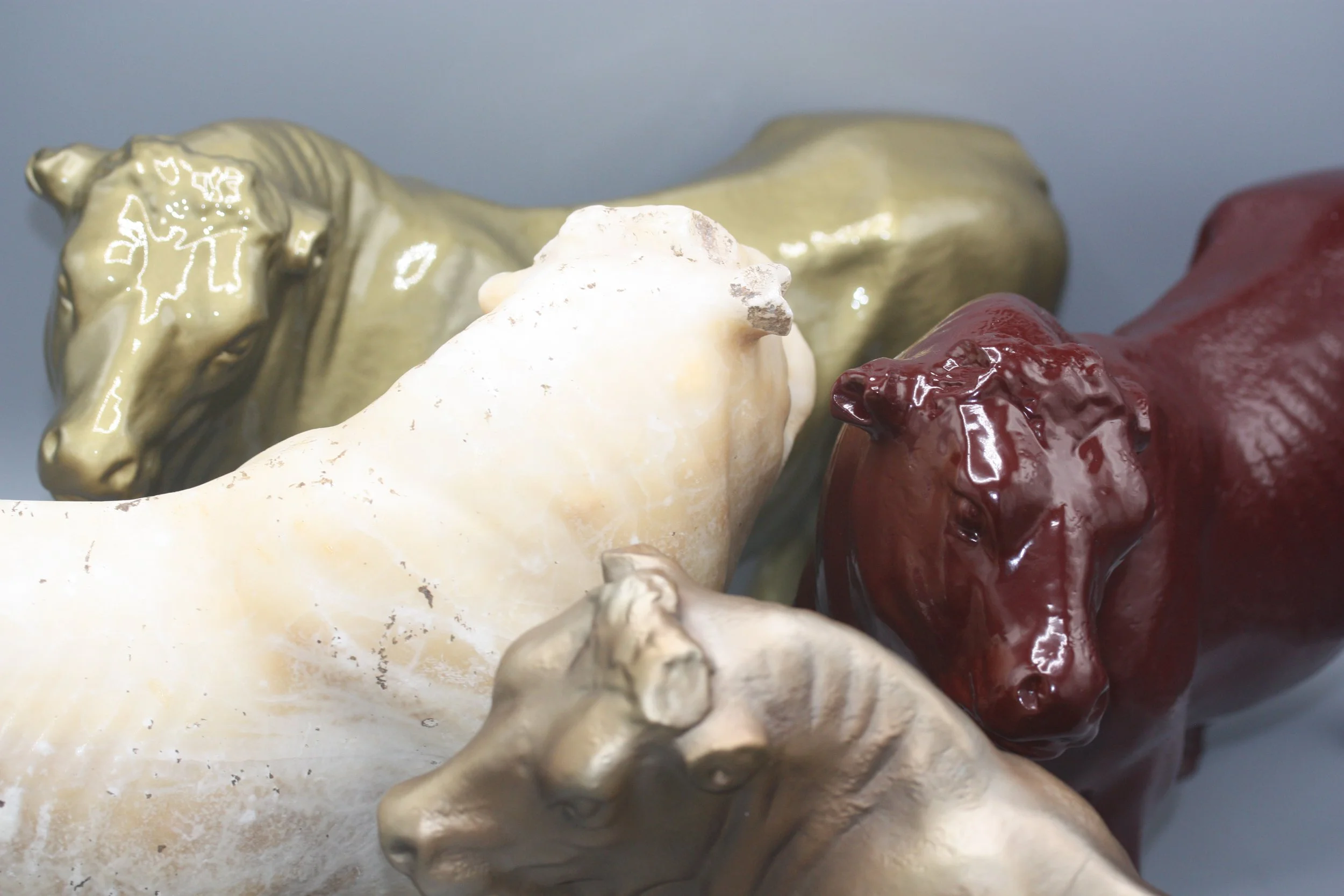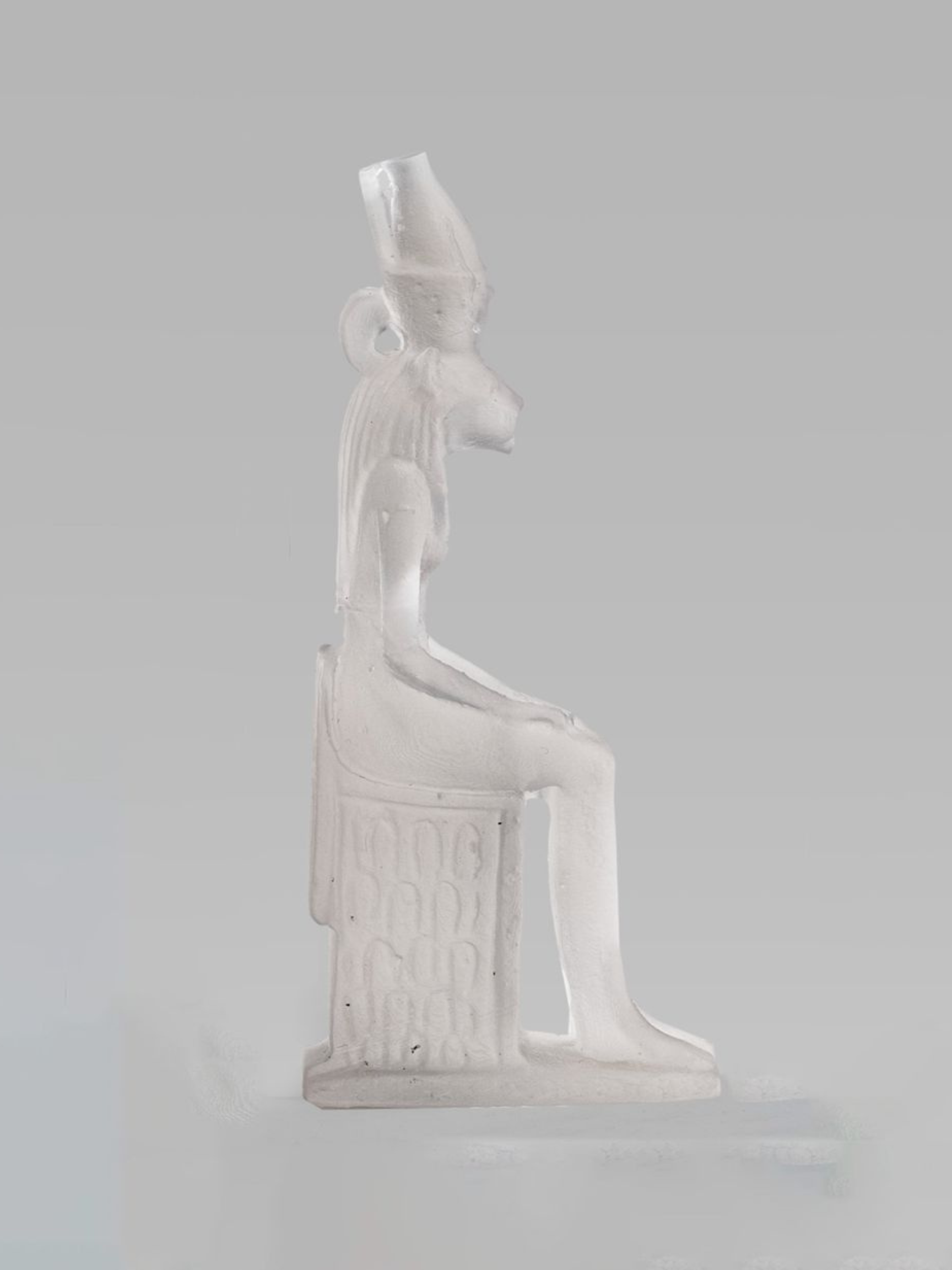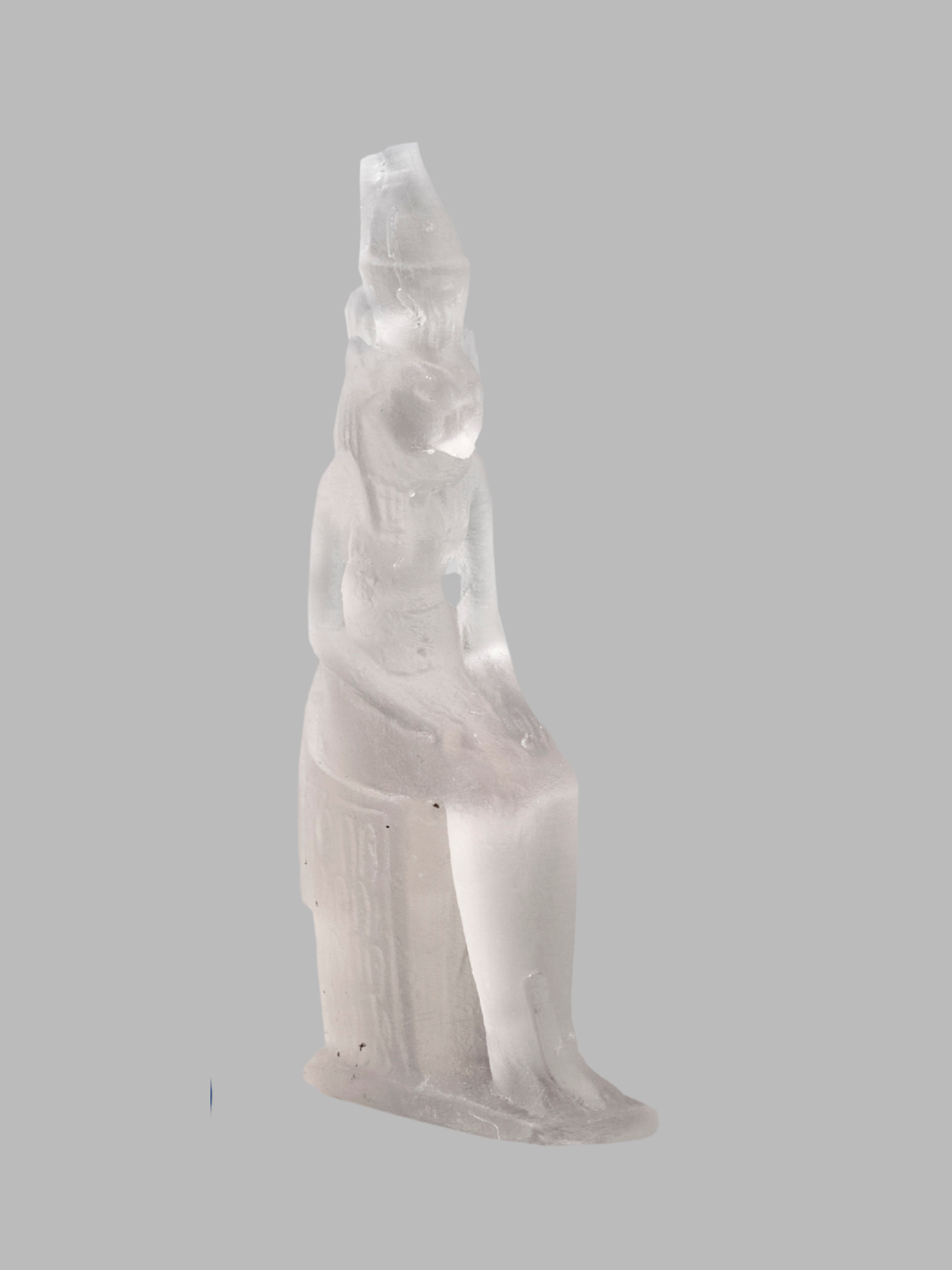 Image 1 of 3
Image 1 of 3

 Image 2 of 3
Image 2 of 3

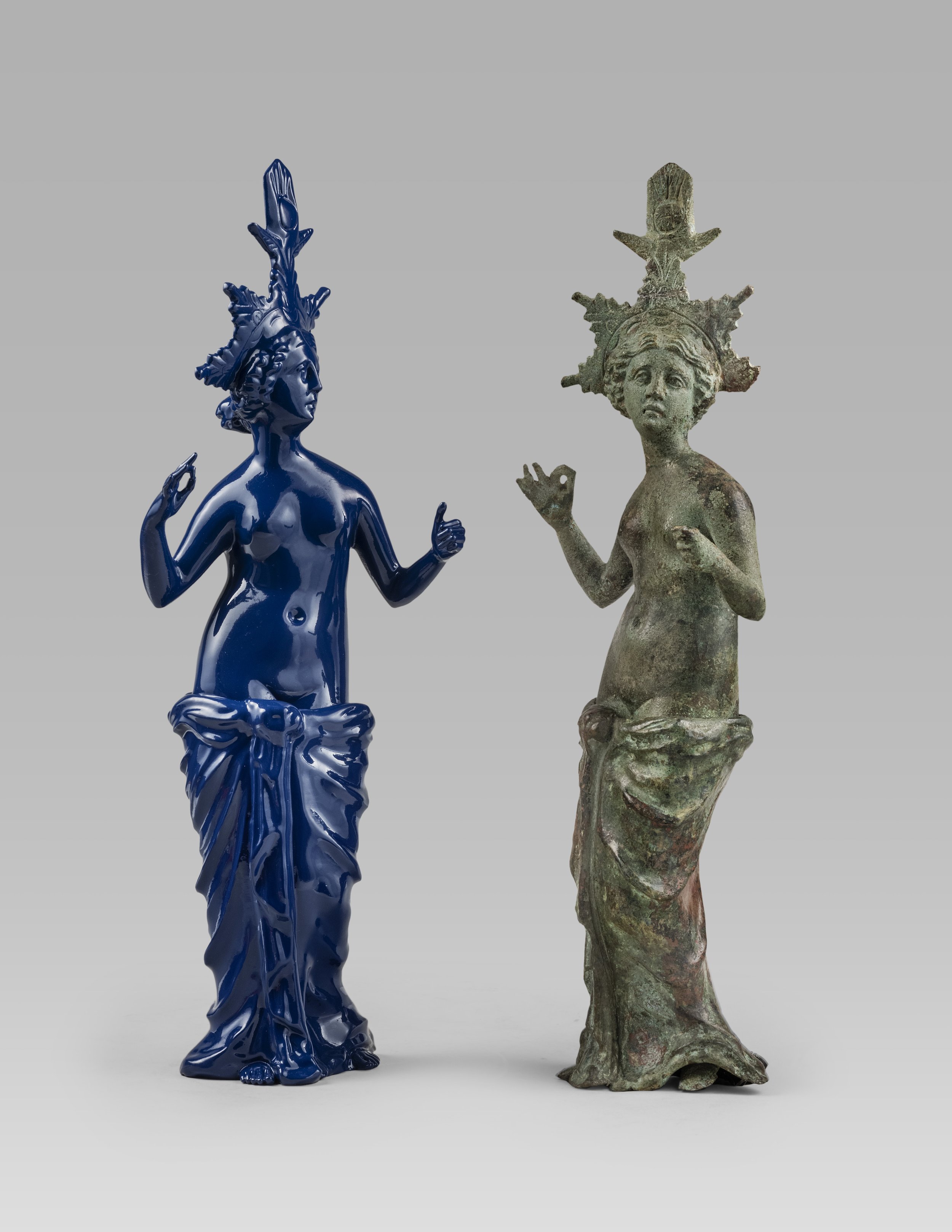 Image 3 of 3
Image 3 of 3




Yves Klein Blue Aphrodite with Elaborate Diadem
Alexander Aboutaam
Limited Edition of 11
Contempo
2024
High-grade polyresin, painted and hand-polished
H: 28.5 cm (11.2 in)
Ancient Original
Roman, ca. 1st - 2nd century A.D.
Bronze
H: 28.5 cm (11.2 in)
Description
Captivating Yves Klein Blue makes this bold contempo a striking modern feat of attraction. This vibrant hue serves as the captivating starting point of an expansive amass of colors for Antico Contempo.
The original Aphrodite bronze statue from the 1st century A.D. had been buried in the earth for thousands of years, causing features like its fingers and toes to erode. To adjust to the contemporary gaze, a complete set of fingers and toes was digitally sculpted onto the virtual model—one of many thoughtful edits made throughout the process. Once finalized, the ancient technique of casting begins, using polyresin to create an accessible and contemporary Aphrodite.
The deep blue color is inspired by the bold art of German-French visual artist Rotraut Klein-Moquay, Yves Klein’s widow, who utilizes the brilliant hue to color her unique non-objective style inspired by her natural surroundings, as well as paintings. This contempo is one of 11 limited editions.
This originally bronze statuette of Isis-Aphrodite was popular in the Ptolemaic period of Ancient Egypt between 305 BC and 30 BC; the longest and last dynasty of the empire. The cult of Isis-Aphrodite, whose protective powers included childbirth and motherhood, became especially important in Ptolemaic Egypt with the worshiping of ruling queens, including the dynasty’s most famous ruler, Cleopatra VII. Her cult spread across the Mediterranean and showed great popularity in Italy and Rome.
The name Isis-Aphrodite was based on the previous assimilation of the great Egyptian goddess Isis, the patroness of nature and magic and the ideal mother, with Hathor, the ancient Egyptian god of love. Isis is represented by the sun-disc found on the two horns surmounted by two feathers. She likely held a blossom or a piece of fruit in the right hand and likely held a mirror in the clenched left hand. Due to its size and symbolism, it is likely this statue was created for a household shrine. Her soft chin, full lips of the small mouth and large, wide-open eyes represent the goddess ideal face of sensitive feminine beauty.
More detailed literature of the ancient original piece available upon request.
Alexander Aboutaam
Limited Edition of 11
Contempo
2024
High-grade polyresin, painted and hand-polished
H: 28.5 cm (11.2 in)
Ancient Original
Roman, ca. 1st - 2nd century A.D.
Bronze
H: 28.5 cm (11.2 in)
Description
Captivating Yves Klein Blue makes this bold contempo a striking modern feat of attraction. This vibrant hue serves as the captivating starting point of an expansive amass of colors for Antico Contempo.
The original Aphrodite bronze statue from the 1st century A.D. had been buried in the earth for thousands of years, causing features like its fingers and toes to erode. To adjust to the contemporary gaze, a complete set of fingers and toes was digitally sculpted onto the virtual model—one of many thoughtful edits made throughout the process. Once finalized, the ancient technique of casting begins, using polyresin to create an accessible and contemporary Aphrodite.
The deep blue color is inspired by the bold art of German-French visual artist Rotraut Klein-Moquay, Yves Klein’s widow, who utilizes the brilliant hue to color her unique non-objective style inspired by her natural surroundings, as well as paintings. This contempo is one of 11 limited editions.
This originally bronze statuette of Isis-Aphrodite was popular in the Ptolemaic period of Ancient Egypt between 305 BC and 30 BC; the longest and last dynasty of the empire. The cult of Isis-Aphrodite, whose protective powers included childbirth and motherhood, became especially important in Ptolemaic Egypt with the worshiping of ruling queens, including the dynasty’s most famous ruler, Cleopatra VII. Her cult spread across the Mediterranean and showed great popularity in Italy and Rome.
The name Isis-Aphrodite was based on the previous assimilation of the great Egyptian goddess Isis, the patroness of nature and magic and the ideal mother, with Hathor, the ancient Egyptian god of love. Isis is represented by the sun-disc found on the two horns surmounted by two feathers. She likely held a blossom or a piece of fruit in the right hand and likely held a mirror in the clenched left hand. Due to its size and symbolism, it is likely this statue was created for a household shrine. Her soft chin, full lips of the small mouth and large, wide-open eyes represent the goddess ideal face of sensitive feminine beauty.
More detailed literature of the ancient original piece available upon request.
Creation
The creation of the contempo starts with research into authentic masterpieces, allowing Antico Contempo to determine how antiques can be thoughtfully reimagined through a contemporary lens. Every piece is examined to identify its unique qualities and what processes are required for adaptation.
High-resolution 3D scans are captured using structured light and infrared sensing, with real-time refinements made to preserve surface nuances and structural integrity. The raw data is reworked to create watertight, workshop-ready meshes.
Through a meticulous back-and-forth process of digital sculpting, 3D printing, and casting and molding, Antico Contempo creates a physical art piece that combines aesthetics of both the ancient and contemporary world.










